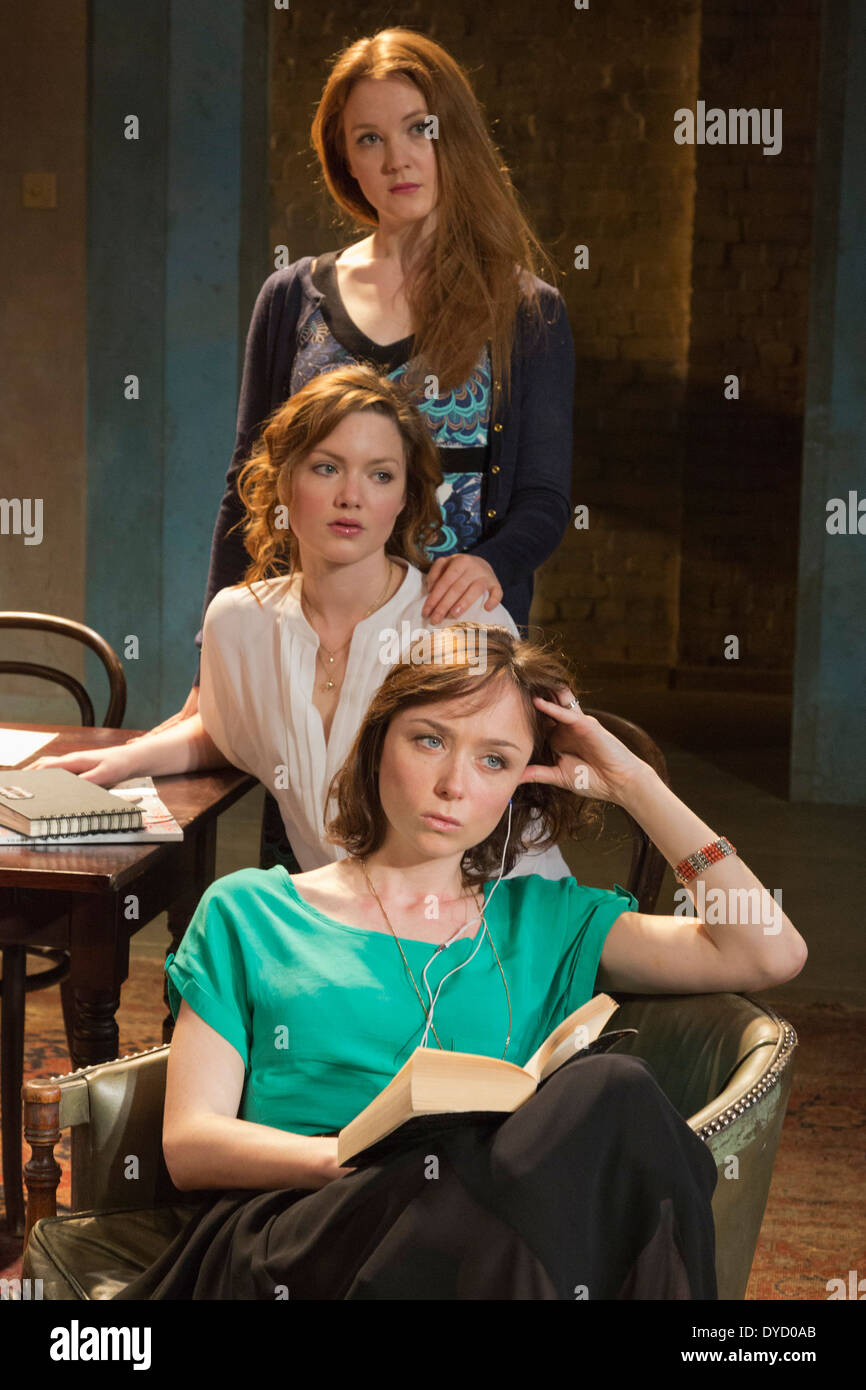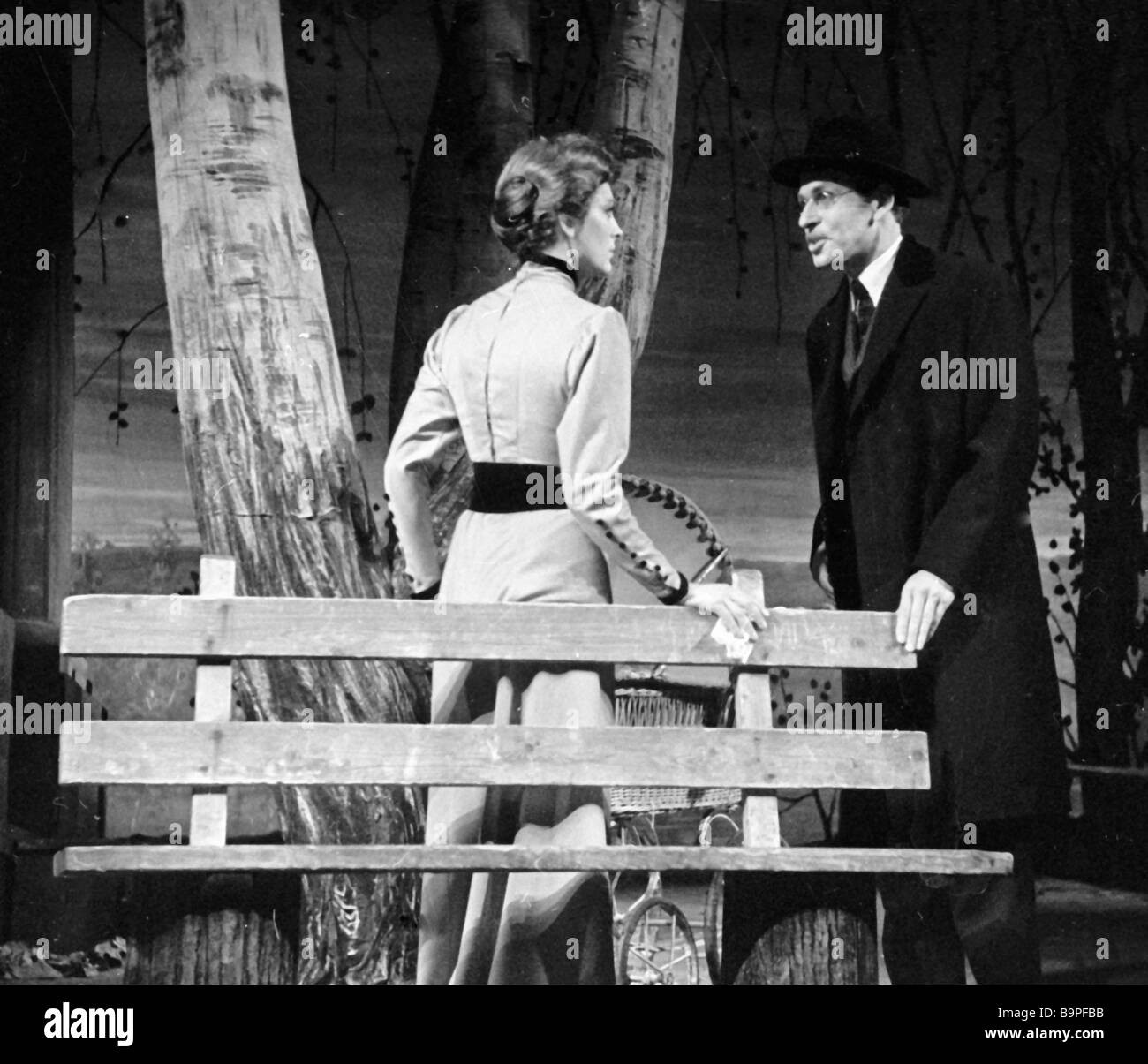

By paring down, the director uncovers the archetypal encoded in the realistic. Only the beautifully crafted costumes and a few crucial stage props-a samovar here, a gramophone there-anchor us to a specific time and place. Serban has stripped away the usual bourgeois interior. But while the light lasts, it is pure glow, brilliant and warm. Throughout the production darkness threatens to close in. This indelible stage picture sets the mood for Serban's ruthless probing of the play's central tensions between past and present, hope and despair, life and death. Then, the three sisters begin to talk, slightly out of sync with their own recorded voices.

An eerie, disembodied voiceover fills the theatre with bits and pieces of memory skimming the surface of consciousness. As one's eyes readjust to the dimness, three monolithic silhouettes take shape and, ghostlike, float across the stage bearing flowers for the dead. Performance notes THREE SISTERS Anton Chekhov New Version by Jean-Claude van Itallie Directed by Andrei Serban American Repertory Theatre (Boston) Arthur Holmberg When the lights go up on Andrei Serban's new production of ThreeSisters, they reveal a stage full of darkness. This process is experimental and the keywords may be updated as the learning algorithm improves.In lieu of an abstract, here is a brief excerpt of the content: These keywords were added by machine and not by the authors. The predicament of Chekhov’s heroines could no longer be sustained within those existentialist terms which can now be seen, in retrospect, to have anticipated specific forms of European ‘absurdist’ drama where waiting for ‘Godot’ can be construed as a simple imaginative extension of waiting for ‘Moscow’. In a Soviet world, the problems of three provincial sisters who, between them, possessed the price of a ticket, could well have been resolved by a trip to the nearest railway station. Why was it that, during roughly the same period, several productions of Chekhov’s major plays were staged throughout Western Europe as well as in the United States of America? The answer would appear to lie in the historical significance of the Russian Revolution which, in philosophical terms, was founded on the notion of a non-tragic universe where human beings could intervene meaningfully in determining their own fate. It is interesting to speculate as to why, in the Soviet Union, there was no major revival of any Chekhov play between Konstantin Stanislavsky’s first productions (staged between 18) and Vladimir Nemirovich-Danchenko’s production of Three Sisters (‘Tri sestry’ staged in 1940 - at a time when the Moscow Art Theatre was being officially promulgated as a model of ‘socialist-realist’ and ‘anti-formalist’ theatrical practice.


 0 kommentar(er)
0 kommentar(er)
